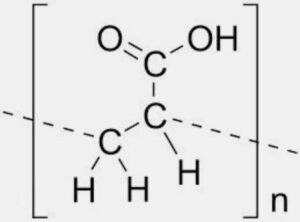Polyacrylic Acid Product Description
Polyacrylic Acid (PAA) is a synthetic polymer derived from acrylic acid. It is a water-soluble polymer that exhibits excellent thickening, dispersing, and stabilizing properties. PAA is widely used in various industries due to its ability to form gels and its high viscosity at low concentrations. The polymer is typically available in both powder and liquid forms, making it versatile for different applications. Its unique chemical structure allows it to interact with water and other substances, making it an essential ingredient in many formulations.
Key Features:
- High Viscosity: Provides thickening properties in formulations.
- Water Solubility: Easily dissolves in water, making it suitable for aqueous systems.
- Biocompatibility: Safe for use in personal care and pharmaceutical applications.
- Stabilizing Agent: Helps to stabilize emulsions and suspensions.
Common Uses:
- Personal Care Products: Used in lotions, creams, and gels for its thickening and stabilizing properties.
- Pharmaceuticals: Acts as a binder and thickener in various drug formulations.
- Agriculture: Utilized in fertilizers and soil conditioners to improve water retention.
- Adhesives and Sealants: Enhances the viscosity and performance of adhesive formulations.
- Paints and Coatings: Serves as a thickener and stabilizer in water-based paints.
Technical Data
| Property | Value |
|---|---|
| Chemical Name | Polyacrylic Acid |
| Molecular Weight | 1,000 – 1,500,000 g/mol |
| Appearance | White to off-white powder |
| Solubility | Soluble in water |
| pH Range | 5.0 – 7.0 |
| Viscosity (1% solution) | 100 – 10,000 cP |
| Glass Transition Temperature | -60 °C |
| Density | 1.1 – 1.2 g/cm³ |
| Storage Conditions | Cool, dry place |
| Shelf Life | 2 years from the date of manufacture |
Additional Notes:
- Safety: Polyacrylic Acid is generally recognized as safe for use in cosmetic and pharmaceutical applications. However, it is recommended to conduct a patch test for sensitive skin.
- Compatibility: PAA is compatible with a wide range of surfactants, emulsifiers, and other additives, making it easy to incorporate into various formulations.
- Regulatory Status: Polyacrylic Acid is compliant with various regulatory standards, including those set by the FDA and EU cosmetic regulations.
This comprehensive overview of Polyacrylic Acid highlights its properties, uses, and technical specifications, making it a valuable resource for manufacturers and formulators across multiple industries.

